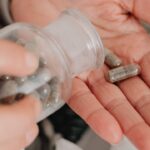Cysts are a common occurrence in women of all ages, and they can arise in various parts of the body. They are essentially fluid-filled sacs that can develop on organs, tissues, or glands. In women’s health, cysts are often seen in the breasts, ovaries, kidneys, and skin. Their presence can range from benign and asymptomatic to symptomatic and, in rare cases, malignant. Understanding the different types of cysts, their symptoms, causes, and treatments is essential for women’s health management and well-being.
Types of Cysts in Women’s Health
Ovarian Cysts: Ovarian cysts are fluid-filled sacs that form on or inside an ovary. There are several types, including functional cysts (the most common), dermoid cysts, cystadenomas, and endometriomas. Functional cysts are typically harmless, often disappearing on their own without treatment.
Breast Cysts: Breast cysts are another common type in women. They can be solitary or multiple and can fluctuate in size throughout the menstrual cycle. While they are usually benign, it is crucial to monitor them for any changes.
Dermoid Cysts: Dermoid cysts can occur on the skin, ovaries, or other parts of the body. They can contain hair, skin, or even teeth, and while usually benign, they can cause discomfort and may require surgical removal.
Bartholin’s Cyst: These cysts form in the Bartholin’s gland located on either side of the vaginal opening. They can become infected and may turn into an abscess.
Kidney Cysts: Simple kidney cysts are common and generally do not cause harm. However, polycystic kidney disease is a more serious condition with multiple cysts that can impair kidney function.
Symptoms of Cysts
The symptoms of cysts vary depending on their location and size:
- Ovarian Cysts: May cause bloating, pelvic pain, or menstrual irregularities.
- Breast Cysts: Often identified as a smooth, mobile lump in the breast, sometimes tender to the touch.
- Dermoid Cysts: Usually painless, can be felt as a lump under the skin.
- Bartholin’s Cysts: Can cause pain and swelling in the vaginal area.
- Kidney Cysts: Often symptomless unless they become large, causing pain or hypertension.
Causes and Risk Factors
The exact cause of cysts can depend on their type, but some general risk factors include:
- Hormonal Fluctuations: A primary factor in the development of ovarian and breast cysts.
- Infections: Can lead to the formation of cysts like Bartholin’s cysts or pilonidal cysts.
- Genetics: Conditions like polycystic ovary syndrome (PCOS) or polycystic kidney disease have genetic components.
- Injury: Trauma to an area can sometimes result in cyst formation.
- Blockages: Blocked ducts or glands can lead to cyst formation, such as in the case of sebaceous cysts on the skin.
Diagnosis of Cysts
Healthcare providers often use several methods to diagnose cysts:
- Physical Examination: Palpation of the affected area can help in identifying cysts.
- Ultrasound: A non-invasive imaging technique particularly useful for ovarian and breast cysts.
- Mammography: Used for breast cysts, especially in women over 40.
- MRI or CT scans: Provide detailed images and are useful in complex cases or where malignancy is suspected.
- Blood Tests: Certain blood tests can identify markers indicative of cancerous cysts.
Treatment Options
Treatment for cysts varies widely based on their type and severity:
- Watchful Waiting: Many cysts require no immediate treatment and are monitored for changes.
- Hormonal Treatments: Birth control pills can help prevent new ovarian cysts from forming.
- Aspiration: Fluid from cysts, such as breast cysts, can be drained using a needle.
- Surgery: Surgical removal may be recommended for persistent, large, or suspicious cysts.
- Warm Compresses: These can be used for Bartholin’s cysts to promote drainage and healing.
Preventative Measures and Management
While not all cysts can be prevented, certain lifestyle changes and medical treatments may reduce the risk:
- Regular Check-ups: Early detection through regular pelvic exams and breast self-exams.
- Healthy Diet: Maintaining a balanced diet to prevent obesity, which is a risk factor for certain cysts.
- Manage Stress: Stress can influence hormonal balance, potentially impacting cyst formation.
When to Seek Medical Attention
It is vital to seek medical attention if you:
- Notice a new lump or a change in an existing lump.
- Experience severe or sudden pain.
- Have symptoms that disrupt your daily life.
- Experience symptoms suggestive of an infection (fever, pus, redness).
Cysts are a widespread condition in women’s health, with the potential to impact quality of life. Awareness, regular health screenings, and understanding when to seek medical advice are key components in managing and treating cysts effectively. With appropriate care, most cysts can be treated successfully, ensuring that women’s health remains a priority.
Remember, every woman’s body is unique, and so is her health journey. Regular communication with healthcare providers is crucial in navigating the complexities of cysts and their impact on women’s health. With advancing medical practices and a growing understanding of women’s health needs, the management of cysts continues to improve, allowing women to lead healthier, more comfortable lives.





